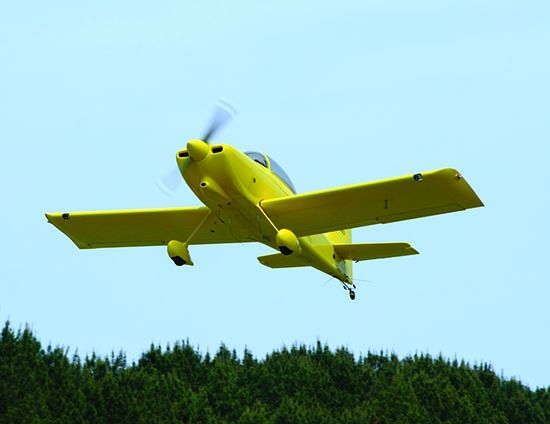I was a “young” pilot, with barely 200 hours, practicing solo closed patterns in our Mooney M20J. After a solid landing on the first, I powered off the runway for the second. Then it happened. At 300 feet, climbing at VX, my engine faltered with no warning; I had lost all power at the worst time!
Without quick action by the pilot, a sudden, low-altitude power loss means instantaneous loss of airspeed, maybe to below stall speed. With heavy right rudder and additional drag from the windmilling propeller, landing gear and flaps, the pilot is in an aerodynamic maelstrom. Any attempt to continue climbing or hold altitude causes an immediate stall-spin, which, at such low altitude, is unrecoverable and likely fatal.
Before my fateful flight, I had self-briefed abort scenarios as my instructor had taught me to do before every flight. That self-brief saved my life. Responding appropriately must be instinctive, regardless of conditions or surroundings. I now brief myself to say, “When something happens at low altitude shortly before takeoff….” If I expect a problem, I’m less likely to freeze.
I was lucky that day. Our 8000-foot runway allowed me to land and slow without incident. Reflecting, I asked myself, “How did I manage this at such a tender ‘pilot’ age? If it happens again, will I do so well? What if the airport has a short runway and tall trees at the departure end? What if there’s water? What if…?”
Discipline and training is crucial. We must understand aerodynamics and how they differ in various flight phases, and train realistically for emergencies. This is where our syllabi, operating handbooks and the ACS fall short. We train and test on engine-out emergencies at altitude in cruise flight. Altitude, however, allows ample time to startle, work through sometimes lengthy checklists, diagnose, try to fix and plan for a safe landing. Cruise configuration in level flight involves minimal torque, P-factor, slipstream and drag. Airspeed dissipates gently, and pitching for best glide feels more natural than instantaneously pitching down to gain airspeed from VX. Additionally, the “power-off” stall practiced in takeoff configuration at altitude bears no resemblance to a sudden complete loss of power at Vx pitch.
This training can save lives, yet it is not practiced or tested. Engine-out on initial climb scenarios are addressed in the ACS only at the multi-engine level. Why is this the case? The ACS should be amended to include this specific scenario at every level of pilot certification. In the meantime, pilots and flight students should insist on appropriate training. They must study, brief and practice it often.
Have you encountered a situation or hazardous condition that yielded lessons on how to better manage the risks involved in flying? Do you have an experience to share with Aviation Safety’s readers about an occasion that taught you something significant about ways to conduct safer flight operations? If so, we want to hear about it.
We encourage you to submit a brief (500 words) write-up of your Learning Experience to Aviation Safety for possible publication. Each month, Aviation Safety publishes a collection of similar experiences sent to us by readers. Sharing with others the benefit of your experience and the lessons you learned can be an invaluable aid to other pilots.
You can send your account directly to the editor by e-mailing it to [email protected]. Put “Learning Experience Submission” in the subject line; add your name and daytime telephone number at the bottom of the e-mail.
Your report will be considered for publication in the Aviation Safety’s readers’ forum, “Learning Experiences,” and may be edited for style and length. Anonymity is guaranteed if you want it. No one but Aviation Safety’s editor is permitted access to the reports. Your name and telephone number are requested only so that the editor can contact you, if necessary.
While we can’t guarantee your submission will get published, we can guarantee that we’ll closely review and consider using it.
All Learning Experience submissions become the property of Aviation Safety and may be republished.




